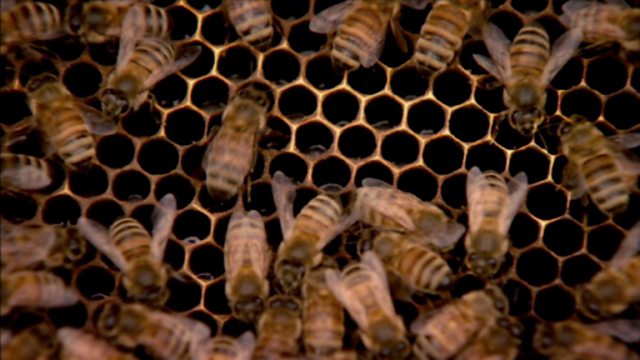Main content

Hexagons in the natural world
Marcus du Sautoy visits a bee-keeper and explores how bees create their honeycombs. If they are going to tessellate they have a limited number of regular polygons they could choose from, but the hexagon is the most efficient – giving the maximum storage area for the least amount of wax. In fact, the bees do not create hexagons, but circular cells which, as is shown using bubble arrays, pull together to make hexagons due to surface tension. This same principle is behind other polygon formations in the natural world too.
Duration:
This clip is from
More clips from The Code
-
![]()
Imaginary numbers at use in the real world
Duration: 04:32
-
![]()
Using probability functions to help locate serial killers
Duration: 04:33
-
![]()
Normal distribution in fish populations
Duration: 04:09
-
![]()
Using patterns in Google searches to predict flu outbreaks
Duration: 04:02





